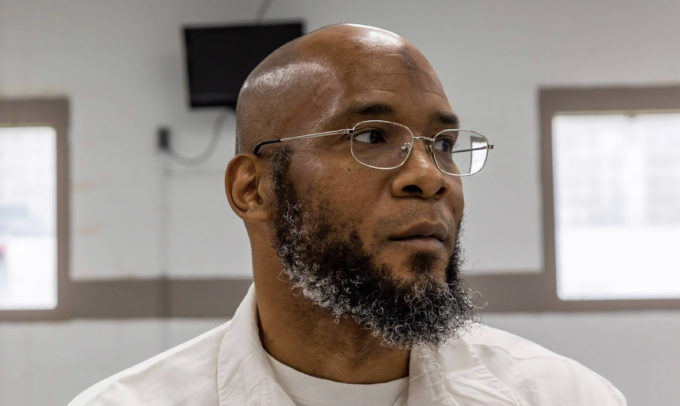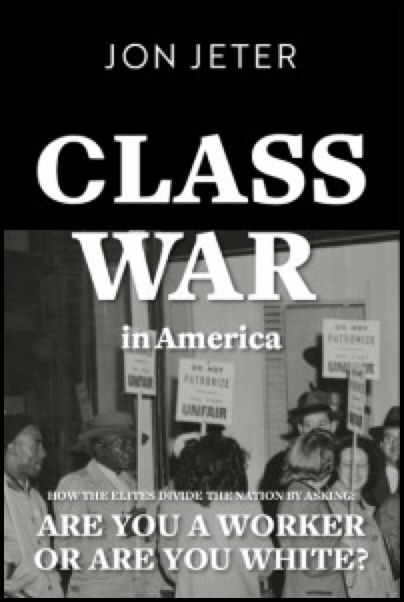From a Hurting Heart: On the Execution of Marcellus Williams

Marcellus Williams.
There’s no other way to write this outside of the extensive curse words I want to use: What, the actual, hell? How on earth does the United States have such a deeply flawed system of injustice that the state of Missouri executed a man that both the defense and prosecution believed was innocent? My heart is heavy. How about you?
The state of Missouri executed Marcellus Williams on Tuesday, September 24. He was convicted of a murder committed in 1998. It was apparently a burglary gone wrong that resulted in the killing of former newspaper reporter Lisha Gayle. Williams was sentenced to death.
There is significant evidence that Williams was wrongly convicted. The original prosecutor, Wesley Bell, sought to block the execution out of concerns about the trial. Bell had concern about two of the primary trial witnesses as well as how prosecutors excluded Black jurors. Further, there was no DNA evidence tying Williams to the crime scene. In fact, the DNA found on the knife used in the murder was actually from a prosecutor and investigator who processed the scene without wearing gloves. Repeated DNA testing found no connection to Williams.
The victim’s family as well as several jurors who served on the trial expressed doubt about Williams’ guilt and wished to spare his life. Inexplicably, none of this was enough to commute Williams’ sentence to life in prison because it did not establish his “actual innocence.”
The witnesses who did testify, as is often the case, were seemingly trying to game this messed up system. One who shared a jail cell with Williams and to whom he allegedly confessed, had been convicted of felonies and offered reward to testify. Likewise, a girlfriend who testified likely falsified her claims for financial gain.
Williams’ case is yet another example of how the system of capital punishment is broken beyond repair. The absurdity that everyone can agree that someone is innocent but that bureaucratic issues prevail is not a sign of a healthy system of justice.
I care a lot that Marcellus Williams was apparently wrongly convicted and certainly wrongly executed. We should all, because executions take place in our names with our tax dollars. We need to speak up, not just when the system gets it so horrifically wrong, as it did here, but because if we do not, our silence is endorsement that the state killing people is OK. I cannot live with that. I hope others cannot as well.
As many have pointed out, making a mistake in convicting someone is a fixable problem–unless the punishment is the death penalty. Then a fix is forever impossible. Why would we operate this way?
I am feeling so distraught, yet I am still trying to see a glimmer of hope. As a college professor, I am so fortunate to work with amazing students who I think will do better. I have the most wonderfully smart daughter who I know will be part of the solution.
I can’t stop crying. We can’t stop trying.
The Judicial Murder of Marcellus Williams

Marcellus ‘Khaliifah’ Williams. Photograph: Courtesy of Marcellus Williams’s legal team.
The State of Missouri executed Marcellus “Khalifah” Williams on Tuesday night despite knowing he was most likely innocent of the crime he was condemned for.
The State of Missouri executed Williams even though he’d consistently professed his innocence of the 1998 murder of Felicia Gayle.
The State of Missouri put Marcellus Williams to death by injecting him with a toxic chemical compound known to cause extreme pain and suffering.
The State of Missouri executed Williams even though the prosecutorial office that put him on trial determined that his conviction should be vacated.
The State of Missouri executed Williams after several jurors who voted to convict and sentence him to death said they now regretted their verdict and wanted to see him freed.
The State of Missouri executed Williams even though the state admitted that the physical evidence used to convict him had been mishandled and tainted by a sloppy police investigation.
The State of Missouri executed Williams even though there was no physical evidence to tie him to the murder scene.
The State of Missouri executed Williams, although the prosecution withheld exculpatory evidence from the defense.
The State of Missouri executed Williams despite the fact that prospective jurors in the case who were black were arbitrarily excluded from the jury.
The State of Missouri executed Williams even after it was revealed that his prosecutor excluded a Black juror because he said the juror “looked like Williams’ brother.”
The State of Missouri executed Williams even though his jury consisted of 11 whites and one black.
The State of Missouri executed Williams even though the two witnesses against him were known liars.
The State of Missouri executed Williams even though the two witnesses against him were both felons.
The State of Missouri executed Williams even though the two witnesses against him changed their stories multiple times before the trial.
The State of Missouri executed Williams after both witnesses against him learned of a $10,000 reward offered by the family of the victim.
The State of Missouri executed Williams even though both witnesses against him were given lenient treatment in pending legal cases.
The State of Missouri executed Williams, although false testimony from “incentivized witnesses” is the leading cause of wrongful convictions.
The State of Missouri executed Williams even though one of the witnesses against him was a jailhouse informant.
The State of Missouri executed Williams even though eleven of the 54 individuals exonerated in Missouri were convicted with the use of testimony from jailhouse informants.
The State of Missouri executed Williams despite data that defendants in St. Louis who were convicted in capital cases were 3.5 times more likely to receive the death penalty if the victim was white and the defendant white, as in Williams’s case.
The State of Missouri executed Williams even though he’d transformed his life while in prison, becoming an imam, a mentor to other prisoners, and a poet. Even on death row, Williams remained, according to his children, a “dutiful” father.
The State of Missouri executed Williams even though nine years ago, the Missouri Supreme Court stayed his execution and appointed a special master to review DNA testing of potentially exculpatory evidence.
The State of Missouri executed Williams even though DNA testing conducted in 2016 showed that Williams was not the source of male DNA found on the murder weapon.
The State of Missouri executed Williams even though he was granted a stay by then-Governor Eric Greitens on August 22, 2017, after eating his last meal and just hours before he was scheduled to be put to death.
The State of Missouri executed Williams after the new Governor, Mike Parson Parsons, illegally dissolved the Board of Inquiry before it had a chance to issue its report on the DNA evidence that cleared Williams of the murder.
The State of Missouri executed Williams even though St. Louis District Attorney Wesley Bell said that the DNA results and lack of other evidence in the case “cast inexorable doubt on Mr. Williams’s conviction and sentence.”
The State of Missouri executed Williams even though the DNA expert who reviewed the evidence in the case asked, “How innocent do you have to be to avoid being executed?”
The State of Missouri executed Williams even after Williams and prosecutors reached an agreement that he would enter an Alford plea to first-degree murder in exchange for a new sentence of life without parole. (The plea was not an admission of guilt and would not have prohibited him from appealing his conviction.)
The State of Missouri executed Williams even though a judge approved the plea deal.
The State of Missouri executed Williams even though Gayle’s family urged that his life be spared. (The desires of families of murder victims for retributive justice are often used by prosecutors to justify the execution of death row inmates. But when these families oppose killing people in the name of their murdered loved ones, their wishes and moral beliefs are ignored.)
The State of Missouri executed Williams despite any evidence that executions are a deterrent to homicides or other crimes.
The State of Missouri executed Williams after 6 “pro-life” justices of the Supreme Court refused to issue a stay to review evidence proving his innocence.
The State of Missouri executed Williams after a Supreme Court that has granted only 11 stays of execution out of 270 requests in the last ten years denied his.
The State of Missouri executed Williams after Joe Biden and Kamala Harris refused to speak out against the execution of an innocent black man.
The State of Missouri executed Williams even though at least 200 people on death row have been exonerated since the reinstitution of the death penalty in 1973.
The State of Missouri executed Williams after the Democratic Party removed its opposition to the death penalty from its platform. The 2020 and 2016 Democratic platforms called for the abolition of the death penalty, which they described as “a cruel and unusual form of punishment” which “has no place” in the nation.
The State of Missouri executed Williams, knowing that the state’s Attorney General’s Office has opposed every innocence case for the last 30 years.
The State of Missouri executed Williams even though at least 20 likely innocent people have been executed in the US since 1989. Their names are:
+ Carlos DeLuna (Texas, executed 1989)
+ Ruben Cantu (Texas, executed 1993)
+ Larry Griffin (Missouri, executed 1995)
+ Joseph O’Dell (Virginia, executed 1997)
+ David Spence (Texas, executed 1997)
+ Leo Jones (Florida, executed 1998)
+ Gary Graham (Texas, executed 2000)
+ Claude Jones (Texas, executed 2000)
+ Cameron Todd Willingham (Texas, executed 2004)
+ Sedley Alley (Tennessee, executed 2006)
+ Troy Davis (Georgia, executed 2011)
+ Lester Bower (Texas, executed 2015)
+ Brian Terrell (Georgia, executed 2015)
+ Richard Masterson (Texas, executed 2016)
+ Robert Pruett (Texas, executed 2017)
+ Carlton Michael Gary (Georgia, executed 2018)
+ Domineque Ray (Alabama, executed 2019)
+ Larry Swearingen (Texas, executed 2019)
+ Walter Barton (Missouri, executed 2020)
+ Nathaniel Woods (Alabama, executed 2020)
The State of Missouri executed Marcellus Williams, making him the 21st person executed in the US since the reinstitution of the death penalty despite credible evidence of their innocence.
The State of Missouri executed Marcellus Williams and plans to execute Christopher Leroy Collings in December.
The State of Missouri plans to execute another innocent man, Robert Roberson, on October 17.



